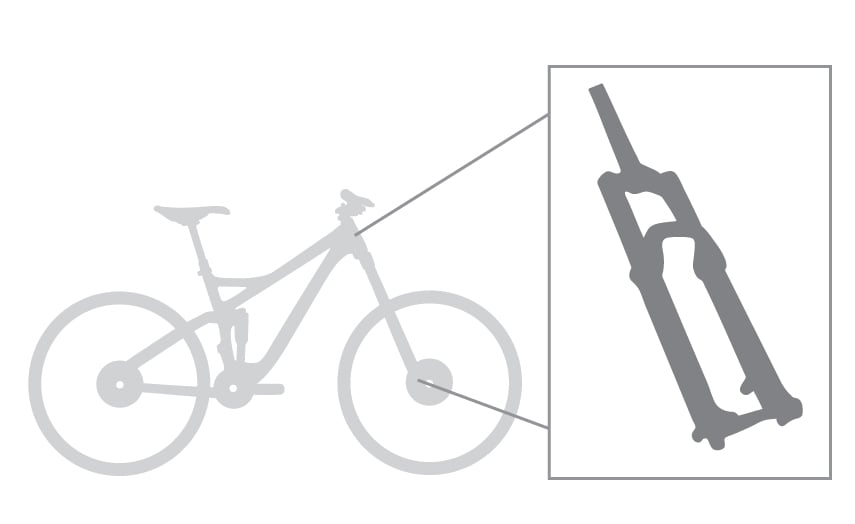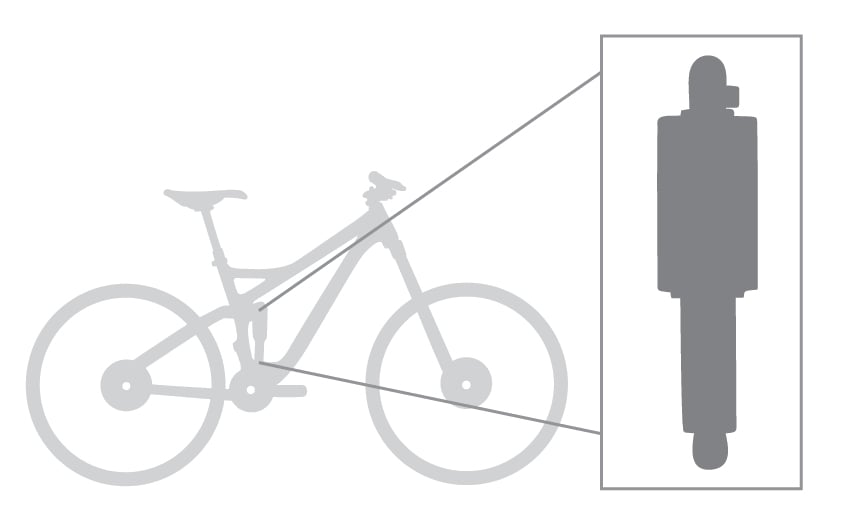How Mountain Bike Suspension Works
For many, the suspension is what makes a mountain bike a mountain bike. While mountain bike suspension components can be the most rewarding, exciting and expensive components to buy, setup and configuration is the difference between a satisfying, bump gobbling trail monster and an overpriced pogo stick. While the rabbit hole runs deep with all sorts of knobs and doo-dads to turn and flip, we’ll cover the basics so you can get the most out of your newly acquired gear. In this guide, we’ll talk about the components and the basic adjustments available to you. See our Mountain Bike Suspension Setup Guide in order to properly set up your suspension before riding.
Spring & Damper
All mountain bike suspension, whether fork or rear shock have 2 main functions which are performed by the spring and the damper. The spring primarily provides resistance while the damper provides the control of that resistance. There are two types of springs: air and coil.
Look at all that air...

Mutant Clicky Pen?
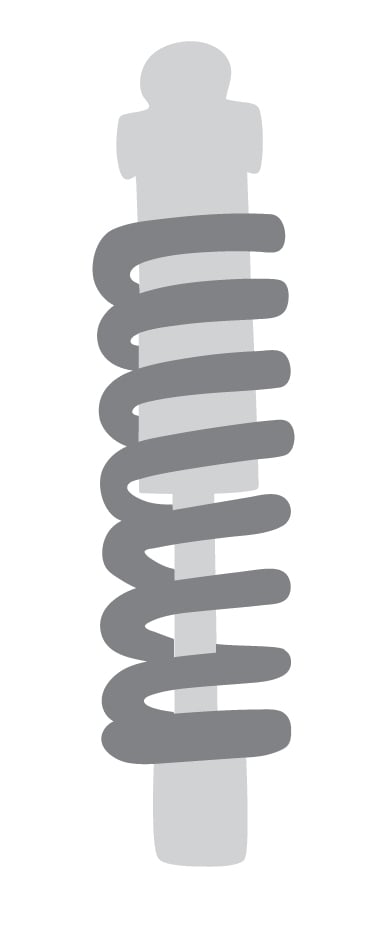

Low Speed vs High Speed
Did we lose yet? No? Good, because it gets even more fun. Compression damping can be divided into 2 types: low speed and high speed.
Most mountain bike suspension products with compression damping adjustment let you adjust low speed, but use preset values for high-speed compressions. Some value-oriented systems will be entirely pre-set at the factory.
Examples of low speed compression damping adjustment are Climb, Trail, Descend (Fox CTD) and Open, Pedal, Lock (RockShox RC3). If high-speed adjustment is not specifically called out, your shock is adjusting for low-speed compression only.
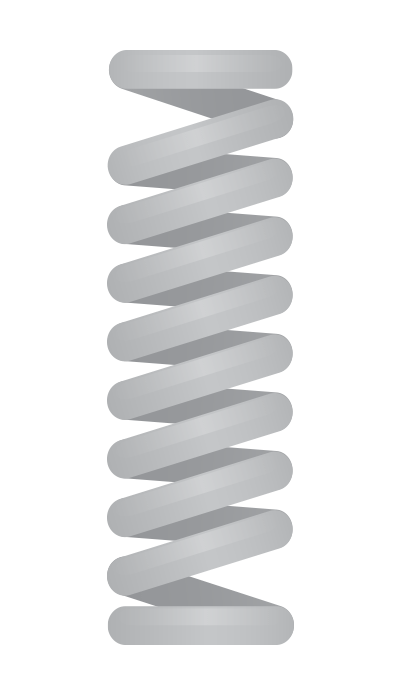
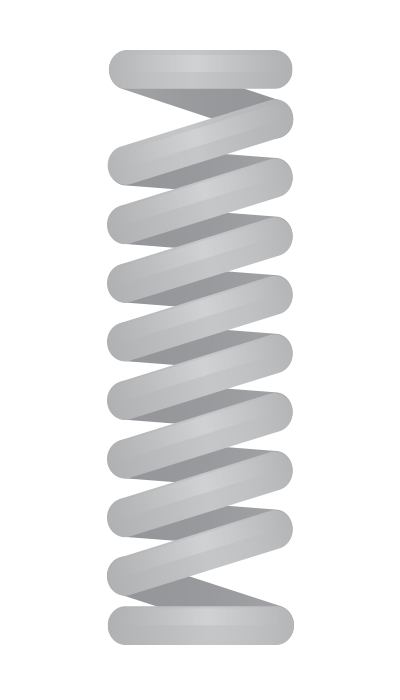
Bottom Out Control
This feature can either be a part of the spring componentry or a part of compression damping.
Air springs naturally have progressive spring rate, meaning that the amount of resistance growth isn’t linear. The resistance ramps up as it drives further into the stroke providing a natural bottom out resistance (Imagine the increasing resistance as you pump up a tire). This can be accentuated by reducing the volume of the air chamber, which can be adjusted on some higher-end suspension.
High speed compression is sometimes used as a bottom-out control and some suspension products even have specific compression damping features that control the end stroke for bottom out control as well.
A well-tuned mountain bike fork or shock will bottom out here and there on a ride, but it should never have that “dropped a t-bone steak on the counter” harsh feeling. It may even go completely unnoticed and bottom out control can be a big part of that.
Lastly, in rear suspension, some bottom out control may be built into the bike. Some mountain bike suspension designs adjust their leverage ratio throughout the travel to make for cushy bottom out. Don’t worry about this too much as its integrated into the frame design and isn’t adjustable.

Position sensitive damping is also a feature in higher end models which allows the suspension to return more slowly after a bottom-out or near-bottom out so you don’t get bounced over the handlebars after hard landings.
Learn More With Our Other Bike Guides:
- How to Choose a Mountain Bike
- Mountain Bike Sizing and Fit Guide
- How to Get Started Mountain Biking
- How to Choose a Mountain Bike Wheel Size
- Mountain Bikes Suspension Basics
- How to Choose a Mountain Bike Dropper Post
- How to Choose Mountain Bike Tires
- How to Choose Mountain Bike Handlebars
- How to Choose Mountain Bike Pedals
- How to Change Bike Pedals
- How to Clean a Mountain Bike
- How to Bleed SRAM Brakes
- How to Bleed Shimano Brakes
- How to Convert to Tubeless Tires
- How to Replace Internal Cable Housing
- How to Adjust Your Rear Derailleur
- Shimano Groupset Hierarchy Explained
- SRAM Groupset Hierarchy Explained
- SRAM vs Shimano Groupsets Compared
- Women's Mountain Bike Buyer's Guide
- What to Bring Mountain Biking
- What to Wear Mountain Biking
- How to Choose MTB Knee Pads
- Gravel Bikes - How To Get Started Gravel Biking
- Electric Mountain Bike Buyer's Guide
- Classes of eBikes
- Bike Helmet Size & Fit Guide
- How to Choose Bike Shoes
- Travel Guides - Where to Mountain Bike
- Travel Guides - Where to Ride eBikes
Learn About our Favorite Bike Gear:
The Best Women's Mountain Bikes
The Best Electric Mountain Bikes
The Best Mountain Bikes for Beginners
The Best Mountain Bikes Under $3,000
The Best Trail Bikes
The Best Enduro Bikes
The Best Gravel Bikes
The Best Mountain Bike Helmets
The Best Full Face MTB Helmets
The Best Mountain Bike Knee Pads
The Best Mountain Bike Elbow Pads
The Best Mountain Bike Shorts
The Best Women's Bike Shorts
The Best Mountain Bike Pants
The Best Mountain Bike Jerseys
The Best Mountain Bike Accessories
The Best Value Mountain Bike Helmets
The Best Dropper Posts
The Best Mountain Bike Forks
The Best Mountain Bike Stems
The Best Padded Mountain Bike Shorts
The Best Mountain Bikes Handlebars
The Best Gifts for Mountain Bikers
The Best Mountain Bike Gloves
The Best Mountain Bike Socks
The Best MTB Fanny Packs
The Best Mountain Bike Backpacks
The Best Clipless Mountain Bike Shoes
The Best Flat Pedal MTB Bike Shoes
The Best Mountain Bike Tires
The Best Mountain Bike Flat Pedals
The Best Bike Racks
The Best Bike Glasses
The Best Bike Goggles
The Best Women's Mountain Bike Jerseys
The Best Tailgate Bike Pads
The Best Bike Trainers
The Best Hitch Bike Racks
The Best Clipless MTB Pedals
The Best Mountain Bikes Handlebar Bags
The Best Mountain Bike Saddles
The Best MTB Wheels
The Best MTB Grips
The Best Mountain Bike Multi Tools
The Best Mountain Bike Seat Bags
Popular Bike Searches
Need a tune up? Bring your bike in for maintenance at any of our flagship locations for assistance:
This is evo. We are a ski, snowboard, wake, skate, bike, surf, camp, and clothing online retailer with physical stores in Seattle, Portland, Denver, Salt Lake City, Whistler, and Snoqualmie Pass. Our goal is to provide you with great information to make both your purchase and upkeep easy.
evo also likes to travel to remote places across the globe in search of world-class powder turns, epic waves, or legendary mountain biking locations through evoTrip Adventure Travel Trips. Or, if you prefer to travel on your own, check out our ski & snowboard resort travel guides and mountain bike trail guides.
Still have questions? Please call our customer care team at 1.866.386.1590 during Customer Care Hours. They can help you find the right setup to fit your needs.
